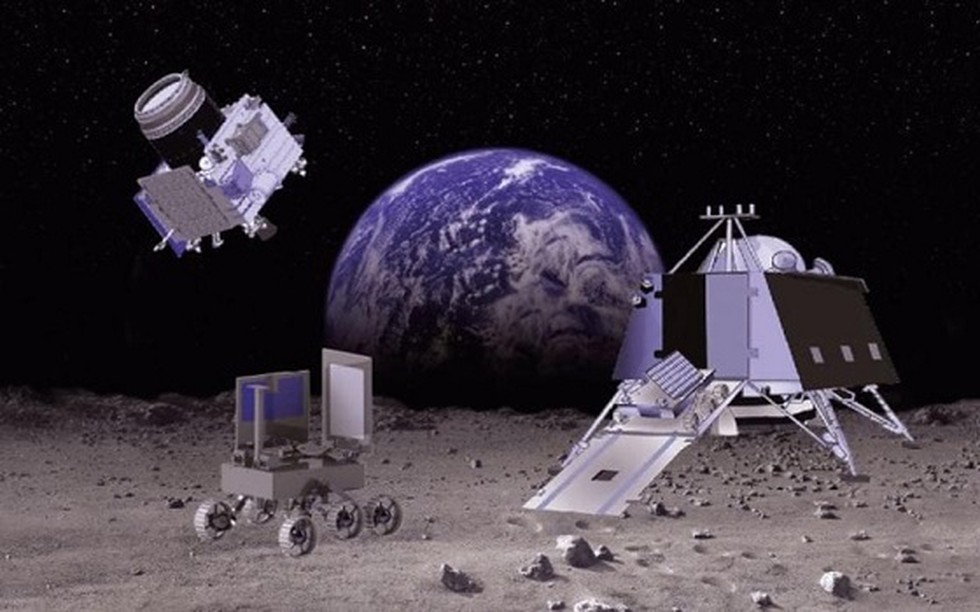
#Chandrayaan 3, Pic credit- vajiramias.com
The Indian Space Research Organisation (ISRO) is preparing for another ground-breaking lunar mission, Chandrayaan 3. This mission builds on the achievements of Chandrayaan 1 in 2008 and Chandrayaan 2 in 2019, but with a fresh emphasis on fulfilling its goals with more precision and success. Chandrayaan-3 represents India’s commitment to unraveling the secrets of the moon and expanding its influence in the global space exploration community.
The Background
The Chandrayaan 1 project was India’s first lunar expedition, and it was a huge success, detecting water molecules on the moon’s surface. Despite certain obstacles, Chandrayaan 2 was a huge stride forward, with its Vikram lander and Pragyan rover designed to explore the moon’s south polar area. The mission, however, did not proceed quite as anticipated, since the Vikram lander lost contact during its descent. Despite this loss, ISRO learned from Chandrayaan 2 and is now preparing to launch Chandrayaan-3.
Chandrayaan 3: The Mission
- Redundancy and Reliability: Chandrayaan 3’s primary aim is to achieve a soft landing on the moon’s surface. One of the most significant lessons from Chandrayaan 2 is the need for redundancy and reliability. Chandrayaan 3 incorporates multiple layers of redundancy in its communication and landing systems to ensure that it successfully lands on the moon’s surface and communicates without interruption.
- Reuse of Chandrayaan 2: ISRO plans to reuse much of the Chandrayaan 2 hardware for this mission, making it more cost-effective. This includes the orbiter, which is still functioning well and continues to provide valuable data from lunar orbit.
- Focus on the South Pole: Like its predecessor, Chandrayaan 3 aims to explore the moon’s south polar region, a region of great interest to scientists due to its potential water ice deposits. Discovering water on the moon has significant implications for future lunar exploration and potentially even establishing a lunar base.
- International Collaboration: ISRO is open to international collaboration for Chandrayaan 3, emphasizing the spirit of cooperation and knowledge sharing in space exploration. Collaborations with other space agencies and institutions could enhance the scientific output of the mission.
- Advancements in Technology: Chandrayaan-3 incorporates the latest advancements in technology, including improved sensors, communication systems, and navigation equipment, ensuring better chances of mission success.
Impact and Importance
Chandrayaan 3 holds immense importance for India and the global space community. Here are a few key reasons:
- Scientific Discovery: Chandrayaan 3 is expected to provide valuable scientific data about the moon’s surface, subsurface, and geological history. This information could lead to groundbreaking discoveries about the moon’s past and its potential for future human exploration.
- Space Diplomacy: ISRO’s commitment to international collaboration fosters goodwill and partnerships in the global space community, furthering India’s reputation as a reliable spacefaring nation.
- Economic Benefits: The mission’s success can boost India’s space industry and economy, potentially leading to more commercial space ventures in the future.
- Inspiration for Future Generations: Chandrayaan-3, like its predecessors, will inspire a new generation of scientists, engineers, and space enthusiasts in India and around the world.
Conclusion
Chandrayaan 3 demonstrates India’s willingness to learn from past mistakes, adjust, and continue its lunar exploration mission. The world is watching the expedition with bated breath, knowing that the knowledge collected could have far-reaching ramifications for the future of lunar exploration and humanity’s understanding of the moon. Chandrayaan-3 is more than just a mission, it represents India’s dedication to cosmic exploration and its ambition to contribute to humanity’s collective understanding of our celestial neighbor, the moon.





